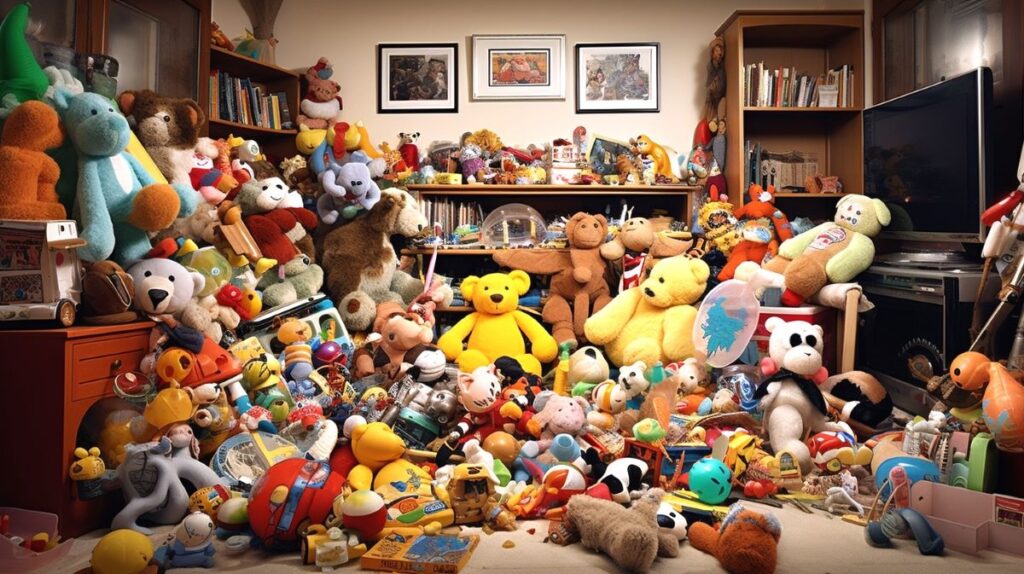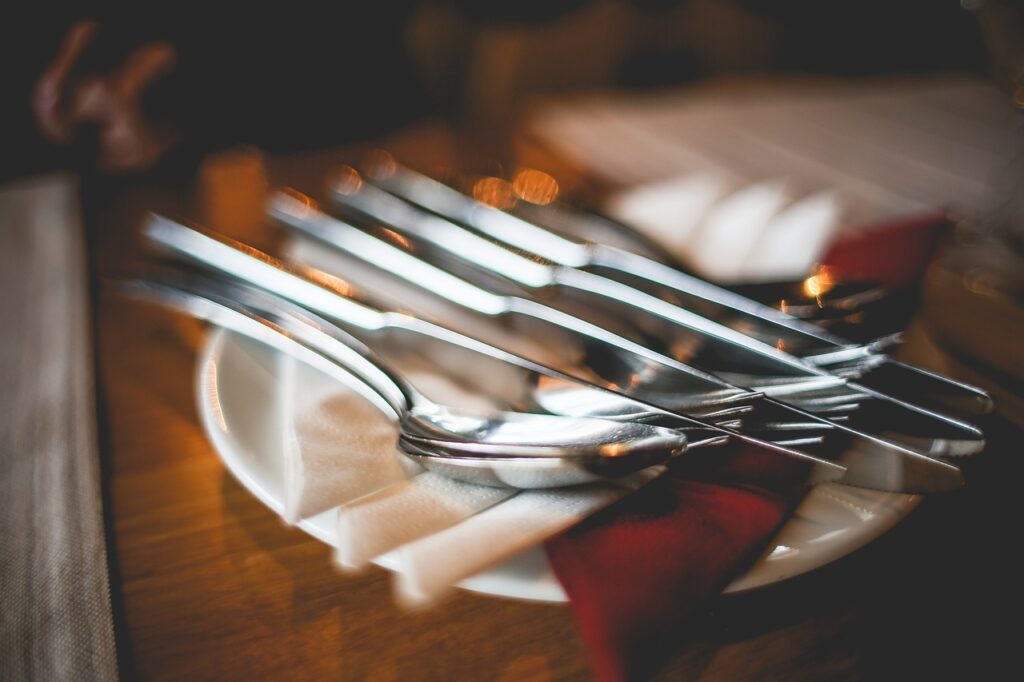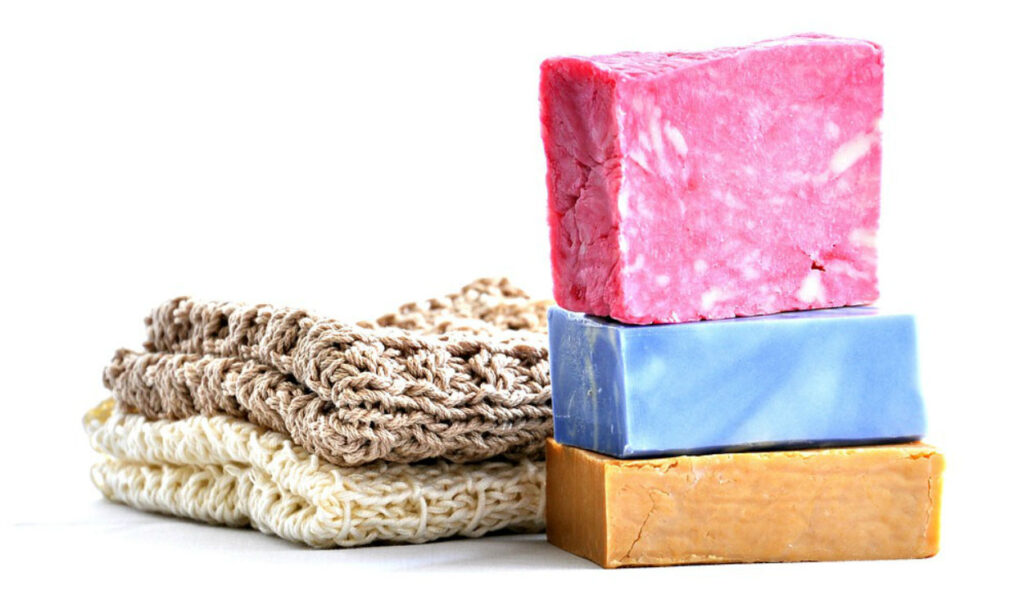Decluttering Kids Toys: A Parent’s Guide to Toy Management
As parents, we want our children to have fun exploring their creativity through play. However, with an endless influx of new toys, it’s easy for a playroom or living space to become overrun with clutter. Piles of plastic and cardboard start to take over, making it difficult to find anything or keep things organized.
Decluttering kids’ toys on a regular basis is important for both your sanity and your children’s development. An overly cluttered play area can be overwhelming and discouraging for young minds. It also takes the joy out of playtime when toys are scattered everywhere.
Have you ever had the experience of your little one looking bored sitting in the middle of a pile of toys? Exactly.
This guide will provide you with practical tips and strategies for decluttering and managing your children’s toy collection, including:
- A toy rotation system to keep play exciting and prevent boredom
- Organization ideas like labeled bins and shelves to simplify clean-up
- Strategies for limiting new toys coming into the home
- Activities to teach kids responsibility for their belongings
With a simple system for organizing, rotating toys, and limiting what comes in, you can help foster creativity, discovery, and imagination in a clean, orderly play space. Becoming better toy managers will also teach your kids valuable lessons about responsibility and living with less chaos.
Let’s get started on bringing more fun and less stress to playtime!
Understanding the Need for Decluttering Kids’ Toys
Decluttering kids’ toys is an essential task that parents must undertake regularly. Toys are an essential part of a child’s development, but too many toys can be overwhelming and lead to fun-sapping clutter. Did you know that the average child has close to 250 toys but only plays with about 12 of them on a daily basis?
- Children are more likely to play with their toys when they are not overwhelmed by too many options.
- Decluttering can help children learn the value of taking care of their possessions.
- When children have too many toys, they’re less likely to appreciate each one as much as they should. That can lead to less imagination and reduced depth in their playtime.
- Decluttering can help children learn to be more deliberate about appreciating and taking care of their toys.
- Decluttering kids’ toys can also help parents save money. That’s right; less clutter equals more cost savings. We’ve had a few occasions where we realized we bought new toys that were very similar to older toys we forgot we had.
- When parents declutter, they can identify which toys their children no longer play with and sell or donate them. This also enables them to purchase new toys in a more meaningful and targeted way.
Decluttering kids’ toys is an essential task that can positively impact a child’s playtime and provide a more comfortable living space. It can help create a clutter-free and more minimalist environment, teach children the value of caring for their possessions, and help parents save money.
The Decluttering Process: 5 Steps to Toy Management
Decluttering kids’ toys can be daunting, but it is necessary to keep the playroom organized and ensure that your children have a manageable number of toys. Less vs. more toys equals more opportunity for imagination and deeper playtime. Here are some steps to follow when decluttering toys:
1.) Identifying Broken and Duplicate Toys
The first step in decluttering toys is identifying broken or duplicated ones. Broken toys should be discarded, as they can be a safety hazard for children. Duplicate toys can be donated or given away to friends or family members.
During this process, it’s also important to check batteries in older toys that require batteries to ensure they haven’t leaked. Unless it’s a very special toy, we’ve found it’s usually just easier to toss toys with corroded batteries rather than keep them. Otherwise, carefully clean the leakage and separate toys containing batteries in the future so you can check them before leakage occurs.
2.) Deciding What to Keep
When deciding what toys to keep, consider the value and interests of your child. Keep toys that are of good quality and still interesting to your child. It may also be helpful to limit the number of toys your child can keep.
If you’re expecting to have a lot more children down the line, you could also organize toys by age and place them in storage for future little tots. By the way, we find this is a great tip for clothing, too!
3.) What to Do with Unwanted Toys
Unwanted toys can be donated to charity or sold online or at a garage sale. Some toys can also be recycled, depending on the material they’ve been made with.
We find that for toys that are in excellent condition, regifting is a solid way to save a few dollars on future gifts, whether for siblings in our family or for children in other families.
4.) Setting Up a Toy Rotation System
A toy rotation system can be helpful in keeping the playroom organized and preventing clutter. This involves rotating toys in and out of storage so that your child has a manageable number of toys to play with at any given time.
This is an incredible way to stay organized if you have many kids like us. When four kids are all playing with toys at the same time, it helpfully limits the choices since the options are a bit more focused. Just ensure each child has a few age-appropriate toys to play with in the overall toy collection.
5.) Establishing Boundaries and Limits
Finally, it is important to establish boundaries and limits regarding toys with your child. This can include limiting the number of toys your child has or encouraging your child to donate toys they no longer use.
By following these steps, you can declutter your child’s toys and create a more organized and manageable playroom. A more organized playroom means more fun and happiness for them during playtime.
Organizing Toys Post-Declutter
After decluttering kids’ toys, it’s time to organize the remaining items to make the most of the available space. Here are some tips on how to organize toys post-declutter:
Storage Solutions
Storage solutions are essential to keep toys organized and easy to access. Consider using bins, toy storage containers, or shelving units to store toys. Clear bins or containers allow kids to easily see what’s inside, while labeled bins make it easier to find specific toys.
Creating a Playroom Layout
Creating a playroom layout is crucial to maximizing the available space.
Consider using a combination of storage solutions, such as shelving units, bins, and toy storage containers, to create designated areas for different types of toys. For example, use a shelf or bin for board games, puzzles, and building blocks while using a toy storage container for dolls and accessories.
If you have a designated toy room and plenty of space, it can also help to organize toys by age-appropriateness. Then, have a common play area where they can all mingle during playtime.
Categorizing Toys
Categorizing toys is another important step to keep toys organized. Group similar toys together, such as Legos, art supplies, or dress-up clothes. Use labeled bins or containers to store each category of toys. Stickers are great for this.
Organizing toys post-declutter can be a challenge, but with the right storage solutions, playroom layout, and toy categorization, it can be a breeze.
Maintaining a Clutter-Free Space
Decluttering kids’ toys is only half the battle. To maintain a clutter-free space, it’s important to implement regular clean-ups, encourage independent play, promote sharing and cooperation, and limit screen time.
Implementing Regular Clean-Ups
Regular clean-ups are essential to keeping clutter at bay.
- Set a schedule for cleaning up toys, such as before bedtime or once a week.
- Encourage kids to participate in the clean-up process by making it fun and rewarding.
- For example, you could set a timer and see how quickly they can clean up or offer a small prize for a job well done.
Encouraging Independent Play
Encouraging independent play is a great way to keep toys organized and reduce clutter.
- Provide open-ended toys that encourage imaginative play, such as blocks, dolls, and dress-up clothes.
- Avoid toys that require a lot of setup or have many small pieces. This will make it easier for kids to play independently and put away toys when they’re done.
Promoting Sharing and Cooperation
Sharing and cooperation are important skills for kids to learn, and they can also help reduce clutter.
- Encourage kids to share toys with siblings and friends and teach them to take turns.
- Model sharing and cooperation yourself by sharing your own belongings and working together as a family to keep the space clean and organized.
Limiting Screen Time
Limiting screen time can help reduce clutter.
Too much screen time can lead to a buildup of electronic devices and accessories, which can quickly take over a space. The preference in our family is that smart or handheld screen-like devices have no part in typical playtime. We do allow them to play kid-appropriate video games once per week, usually on Sundays after church, but that’s something they all can have fun with together.
Encourage them to imagine a story rather than watch a story, to create adventure rather than watch one from afar.
- Set limits on screen time and encourage kids to engage in other activities, such as reading, playing outside, or doing a craft.
- Screen time can reduce a child’s ability to imagine the world around them when the imagination is done for them on the screen.
- This will not only reduce clutter but also promote healthy habits and creativity.
Following these tips, you can maintain a clutter-free space and create a more peaceful and organized home for your family. Remember, less can be more, and simplifying can lead to a happier and more fulfilling life.
The Benefits of Decluttering Kids Toys
Decluttering kids’ toys can offer a wide range of benefits for both parents and their children. Here are some of the key benefits of decluttering.
Reduces Clutter and Stress
One of the most obvious benefits of decluttering kids’ toys is that it can help to reduce clutter and stress in the home. By removing toys that are no longer being used or broken, parents can create more space and make it easier to keep the home tidy. This can help to reduce stress levels and make it easier to find the toys that children actually want to play with.
Encourages Creativity and Imagination
Decluttering can also encourage creativity and imagination in children. When there are fewer toys to choose from, children are forced to be more creative and use their imaginations to come up with new games and activities. This can be especially true with open-ended toys, such as building blocks or art supplies, which can be used in a variety of different ways.
Promotes Education and Learning
Another benefit of decluttering is that it can promote education and learning. By getting rid of toys that are no longer age-appropriate or are not being used, parents can create space for new toys that are more educational and stimulating.
For example, parents might choose to donate old toys and replace them with puzzles, board games, or science kits that can help promote learning and development.
Makes Room for Yard Sales and Donations
Decluttering can also make it easier to get rid of toys that are still in good condition but are no longer being used. By setting aside toys for yard sales or donations, parents can give these toys a second life and help to reduce waste. This can be especially true for toys that are still in good condition but are simply no longer being played with.
When donating or recycling toys, be sensitive to your children’s wants. Their toys are special to them. Be understanding and teach them not to place an undue value on material things but also be sensitive to their maturity level, wants, and desires.
Clears Out the Basement
Finally, decluttering kids’ toys can help to clear out the basement or other storage areas in the home. By getting rid of toys that are no longer being used, parents can create more space for other items or make it easier to find things that are stored in the basement. This can be especially true for families who have accumulated a large number of toys over the years.
Frequently Asked Questions
As a grandparent, what toys should I keep for grandchildren?
When decluttering kids’ toys, it can be difficult to decide what to keep for grandchildren. It’s best to keep classic toys, such as wooden blocks, puzzles, and board games, that will never go out of style. It’s also a good idea to keep sentimental toys passed down through the family.
My husband still remembers a wooden train set with tracks his grandparents had at home when he was a toddler. He’d play with it every time he’d stay at their house.
How do you declutter stuffed animals?
Stuffed animals can quickly take over a child’s room. To declutter, start by asking your child to choose their favorite stuffed animals and set them aside. Then, donate or sell any stuffed animals that are no longer loved or played with. Consider keeping a small number of stuffed animals for sentimental reasons.
How do you declutter kids’ books?
When decluttering kids’ books, start by removing any books that are torn, stained, or missing pages. Then, ask your child to choose their favorite books and set them aside. Donate or sell any books that are no longer loved or read. Consider keeping a small number of books for sentimental reasons.
Decluttering the playroom – Where do I start?
When decluttering a playroom, start by removing any broken or damaged toys. Then, sort toys into categories such as puzzles, board games, and stuffed animals. Finally, ask your child to choose their favorite toys and set them aside. Donate or sell any toys that are no longer loved or played with.
For more info, check out a similar section earlier in the article.
What is the 20-toy rule?
The 20-toy rule is a popular decluttering method that involves limiting the number of toys a child has to 20. The idea is to encourage children to play with the toys they have and to prevent clutter from taking over the home.
If they already have way more than 20 toys, this could be a bit shocking for them at first. So, transition them to fewer toys gradually if it’s a strategy you’d like to implement.
How often should I rotate toys?
Rotating toys every 4-6 weeks to keep playtime fresh is a good rule of thumb. This prevents boredom and allows you to store toys your child has outgrown or lost interest in. Mark a calendar so kids know when new toys will come out of storage. They may even enjoy helping with this process.
How do I get my kids to agree to get rid of toys?
Explaining that decluttering is needed to organize the play space and make room for new toys can help. Offering a reward like a special outing once decluttering is done may also motivate kids. Let them pick a few favorites from each category to keep. Don’t shock them into decluttering rigidly as a sudden rule or something that needs to be done immediately or all at once.
Ultimately, if they’ve gotten used to having a lot of toys, that’s on you, not them! So, teach them patiently and gradually to detach from some of their toys just like they’ve gradually become attached to them over the years.


